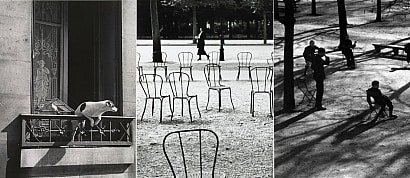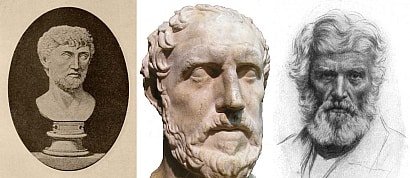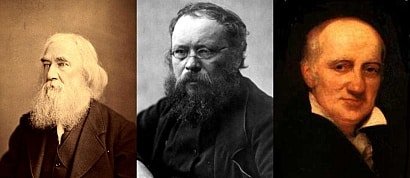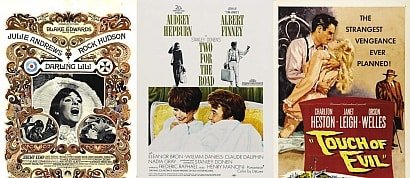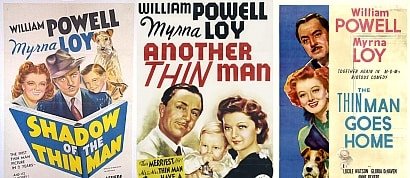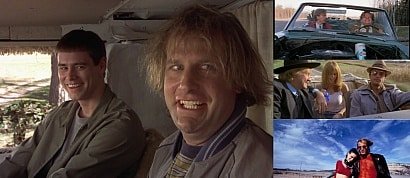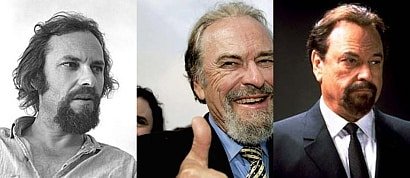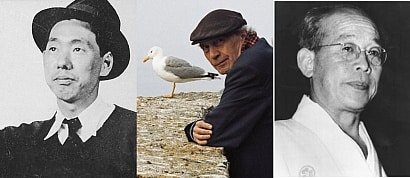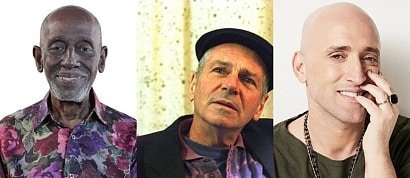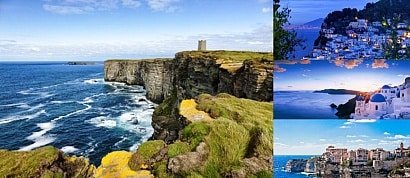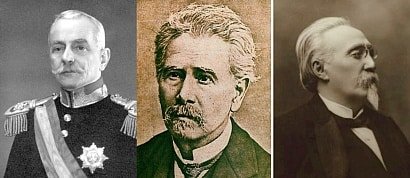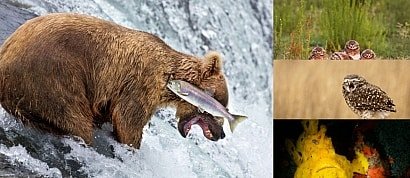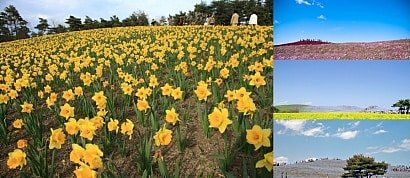South African wars
 Add image to section
Add image to section
Battle of Isandlwana, January 1879
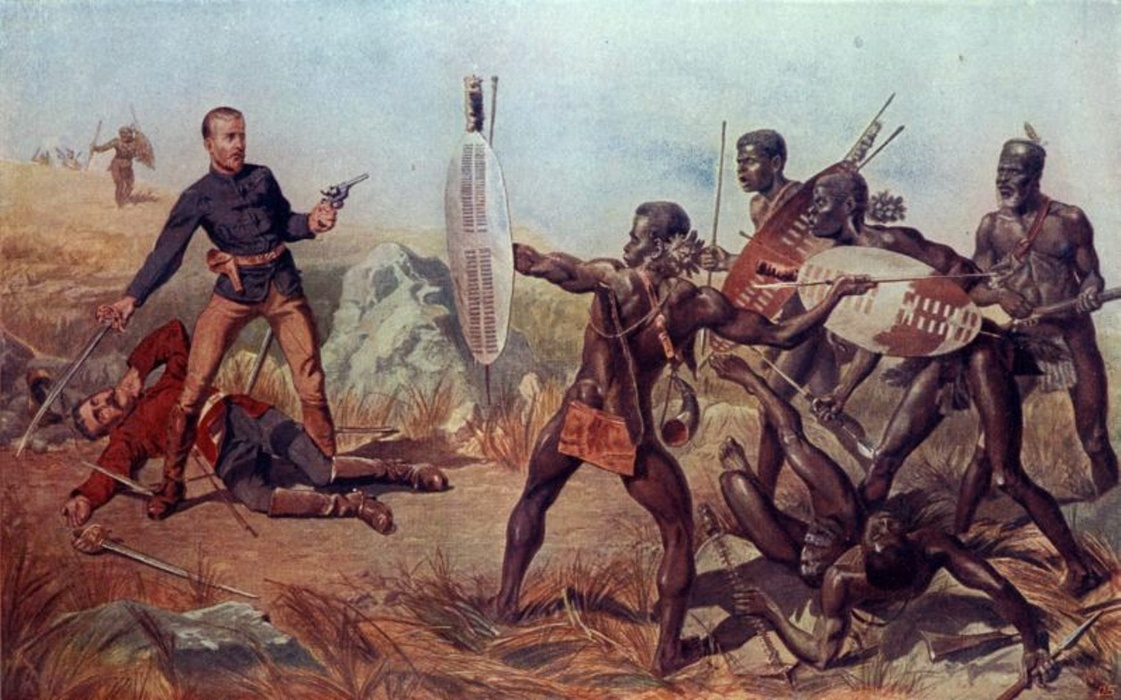
While the Cape Colony was changing hands between European rulers, the northern and eastern lands, inhabited by Bantu-speaking peoples, were going through turbulent times. In the late 18th century, Bantu chiefdoms and clans began to form defensive alliances. This was mainly in response to efforts by slave traders—the Portuguese from Mozambique, the Griqua and the European settlers from Cape Colony—to round up black Africans to work as slave labour on their farms.
 Add image to section
Add image to section
Shaka

One chiefdom became more powerful than all the others. In 1818, Nguni tribes under Shaka, son of the chief of a Zulu clan, established a kingdom between the Tugela and Pongola rivers. The Zulu people had prospered from their contacts with the Portuguese. Not only had they been enriched from selling ivory from elephant tusks to the Europeans, they were also benefiting from the new high-yielding crop that the Portuguese had introduced to them, maize. Shaka took control of his army and, by 1825, had conquered neighbouring clans to create a fearsome new warrior state, stoutly defended by fortified settlements called amakhanda.
 Add image to section
Add image to section
Mfecane

A map showing the rise of the Zulu Empire and the mfecane. Under the Zulu advance, other chiefdoms and clans were fdorced to flee across a wide area of southern Africa. They included the Soshangane, Zwangendaba, Ndebele, Hlubi, Ngwane and Mfengu. Some, such as the Xhosa, were caught between the Zulus and advancing Voortrekkers and forces of the British Empire

Around 1821, the Zulu general Mzilikazi defied Shaka and set up his own kingdom. Mzilikazi and his followers, called the Ndebele (or Matebele), founded a state northwest of where Pretoria stands today. But the arrival of Boer settlers in 1837 (see Great Trek, below) forced them to migrate once more, moving north of the River Limpopo to an area now known as Matabeleland, in present-day southern Zimbabwe. In doing so, they drove the region's inhabitants, the Shona, northwards. The tension between the two peoples has continued to this day in Zimbabwe.
 Add image to section
Add image to section
Great Trek

Trekboers had been travelling northeastwards from Cape Town in small numbers for many decades, but in the 1830s the trickle became a flood. Known as the Great Trek, the mass movement was triggered by Boer resentment at British rule in the Cape Colony—in particular, the insistence that church services be held in English and the ruling that the Boers give up their slaves following the abolition of slavery throughout the British Empire in 1833.

From 1835 onwards, groups of Boers, together with their Khoikhoi and black servants, set off for the interior in search of their own lands—and independence. Crossing the Orange River, the Cape Colony's northern frontier, these Boers, or Voortrekkers ("pioneers") as they were known, discovered vast areas of apparently uninhabited grazing land to the north and east: the Highveld. They were unaware that these pasturelands had been recently abandoned by their former Bantu occupants as a result of the mfecane. As the Boers pushed further northeastwards over the Vaal River into the Transvaal, they came across lands still occupied by Bantu clans and chiefdoms.

The killing of the Boer leader Piet Retief by the Zulu king Dingane triggered a war between the Zulus and the Boers. The Boers' superior weapons gave them easy victory. At the Battle of Blood River, fought at the Ncome River in Natal on 16th December 1838, several thousand Zulus died, reportedly causing the Ncome's waters to run red.

A painting depicting the Battle of Blood River. The battle was fought between 470 Voortrekkers led by Andries Pretorius and an estimated 10,000–15,000 Zulu impi (a force of warriors) on the bank of the Ncome River on 16th December 1838, in what is today KwaZulu-Natal.

The Boers' triumph under Andries Pretorius led to a civil war within the Zulu nation. King Dingane's half-brother, Mpande, even formed an alliance with the Boers to overthrow the king. After Dingane's death, Mpande was proclaimed king of the Zulus.
By the early 1840s, the Boer Voortrekkers had occupied much of the Transvaal. Under their leaders Andries Hendrik Potgieter, Andries Pretorius, Jan Mocke and others, they defeated all the remaining weaker African chiefdoms. Two Boer republics emerged in the 1850s. The first, the Transvaal, also known as the South African Republic, was formally recognized by Britain with the signing of the Sand River Convention on 17th January 1852. The second, the land between the Orange and Vaal rivers (previously claimed by the British as the Orange River Sovereignty), became Boer territory in 1854 as the Orange Free State.
 Add image to section
Add image to section
Natal

A sculpture depicting Dick King's historic horseback ride from Port Natal. In May 1842 the British garrison at Port Natal (present-day Durban) was under siege by Boer forces led by Andries Pretorius. King and his 16-year-old servant Ndongeni escaped and set off for Grahamstown, a distance of 960 kilometres (600 miles), to convey a request for immediate assistance. Thanks to King's 10-day dash across the wilderness, British reinforcements arrived in time to save the garrison from surrender or starvation.
Following their victory over the Zulus at Blood River, the Boers had also attempted to establish another republic, called Natalia, with its capital at Pietermaritzburg in 1839. But, just a short distance away, the British had already founded their own settlement, Port Natal, on the northern shore of the Bay of Natal (it would later become the port of Durban, named after Benjamin D'Urban, a governor of the Cape Colony). The two groups of European settlers were set on a collision course. At the Battle of Congella in 1842 the Boers, now in alliance with the Zulus, besieged Port Natal, but the British held out to drive them out.
The Natalia Republic was annexed by the British in 1843 and proclaimed a British colony, called, simply, Natal. Between 1849 and 1851, thousands of settlers arrived from Britain to live there. But they soon faced a labour shortage on the farms and plantations they established—men of the local Zulu warrior nation refused to work on them. So the colonists looked elsewhere to other parts of the British Empire. In 1860 the first identured labourers (contracted workers) arrived from India. Over the next 50 years, 150,000 more Indian servants and labourers would come to Natal, as well as many free "passenger Indians". Among their number was, in 1893, the lawyer and social activist Mahatma Gandhi.
 Add image to section
Add image to section
Basotho

King Moshoeshoe of the Basotho nation
The Sotho (or Basotho) people, inhabitants of the valleys and foothills of the Drakensberg, had, under their king Moshoeshoe I, managed to resist the Zulu onslaught in the 1830s and 40s. They also provided stiff resistance to the Boer advance. In a series of wars fought over a dozen years Moshoeshoe held out, despite being forced to cede territory to the Boers by the 1866 Treaty of Thaba Bosiu. What was left of his kingdom became a British protectorate, named Basutoland, in 1868. Now known as Lesotho, it remains to this day an independent nation within South Africa's borders.
 Add image to section
Add image to section
Xhosa Wars

Xhosa warriors attack a slow-moving British army column.
In the Eastern Cape, the series of wars between the white settlers—first the Boers, later the British—and the Xhosa continued on through the mid-19th century. Conflicts were often triggered by accusations of cattle raiding or petty thefts by the Xhosa. The British took control of Xhosa lands east of the Great Fish River as far as the Great Kei River, calling their new territory British Kaffraria. The Xhosa were forced to resort to desperate measures. Between 1856 and 1858, they killed many of their own cattle and destroyed their crops in the belief that this would cause their ancestors to rise from the dead and destroy the white invaders. But as a tragic consequence thousands of Xhosa starved to death and many of the survivors were forced into labour in the Cape Colony.
 Add image to section
Add image to section
Diamonds

A photograph of New Rush diamond mine taken in 1872. It shows the individual claims and the roadways running between them. The rough encampment of tents and shacks beyond would one day become the city of Kimberley.

A photo showing mineworkers descending into the Kimberley Mine, 1875
The first discoveries of diamonds were made in 1867 in the sediments of the Orange River. Two years later, gem-quality diamonds were found in a hard rock called kimberlite, named after the nearby town of Kimberley. The "diamond zone", which was on land occupied by the Griqua, was also claimed by the Orange Free State, the Transvaal Republic and the southern Tswana chiefdoms. The British granted rights to Nicolaas Waterboer, leader of the Griqua, but persuaded him to request their protection against his Boer rivals. In 1871 the area became a separate colony of the British Empire named Griqualand West (some Griqua had earlier trekked eastwards across the Drakensberg mountains to found another homeland, Griqualand East, in 1861). The Griqua never received any share of the wealth generated by the Kimberley diamond mines.

The town of Kimberley and its diamond mine, photographed in 1893
With the arrival of European and black African miners, the Cape Colony's population rapidly increased. The diggers were gradually bought out by big mining companies. De Beers Consolidated Mines, a company co-founded in Kimberley by British businessman Cecil Rhodes in 1888, became the sole producer in 1889.
 Add image to section
Add image to section
Confederation

A map of the colonies and states in southern Africa in 1878
The Cape Colony achieved self-governing status within the British Empire in 1872. Now the Cape Colony governors intensified their efforts to bring all the other states of southern Africa into a confederation under their rule. To this end, the Transvaal Republic, along with Griqualand East and West, was annexed in 1877.

A photo of a Zulu warrior armed with the iklwa stabbing spear and iwisa club. His kilt is made of genet tails.
The British also renewed their attempts to secure black Africans' labour for their farms, plantations and now their diamond mines. Their superior firepower gave them victory in the ninth and final Xhosa War of 1877–79, resulting in British annexation of all remaining Xhosa territory.
The still-powerful Zulu kingdom remained a major obstacle to British plans, however. Following an ultimatum—with which the Zulu king Cetshwayo could not comply—British troops invaded Zululand in January 1879. They were faced by a Zulu force of some 20,000 warriors armed mainly with iron spears and cow-hide shields. In the Battle of Isandlwana, the British, despite having modern rifles and field guns, were overwhelmed, losing 1300 from their column of 1800 men. But a British garrison successfully defended the mission of Rorke's Drift against the Zulu onslaught, and, with the arrival of reinforcements, eventually triumphed in July. Zululand was annexed in 1887 and sugar plantations were established on former Zulu lands.
 Add image to section
Add image to section
First Boer War

British Major General Sir George Pomeroy Colley at the Battle of Majuba Hill on 27th February 1881 in the First Boer War.
Boer resentment against rule by the British turned into open rebellion in the Transvaal in 1880. Following Boer attacks on occupying British troops, the first Anglo-Boer War broke out. Successful guerrilla warfare tactics and a decisive Boer victory at the Battle of Majuba Hill on 27th February 1881 saw the British government suing for peace at the Pretoria Convention. The Transvaal regained its independence as the Zuid-Afrikaansche Republiek (South African Republic), or ZAR. Paul Kruger, one of the leaders of the Boer uprising, became the republic's president in 1883.
Load more items (4 more in this list)
People who voted for this also voted for
PHOTOS | Andre Kertesz
Agnostics
«Kriminaloberkommissarin Leonie Winkler»
Individualist anarchism
Top 34 Movies of 2017
Henry Mancini Score
Classic Screwball Comedies
Your Lips Are on My List, Vol. 4
Road Trip Movie List Collection
Remembering Rip Torn
Lunedì dell'Angelo
My Favorite Albums: 1975
PHOTOS | Arthur Benda
Male Directors as Feminist
Famosos brasileiros vitimados pela Covid 19...
More lists from Milena
Breathtaking European Islands You’ll Want To ...
Salads - Recipes
Nations Portugal
Comedy Wildlife Photography Awards 2016
I beautiful flowers photos?
Flower Paradise Hitachi Seaside Park Japan
Famous People Born in 1961
 Login
Login



